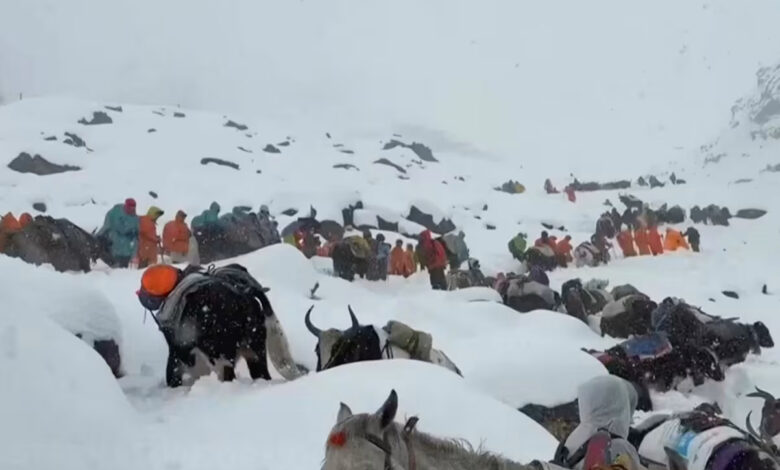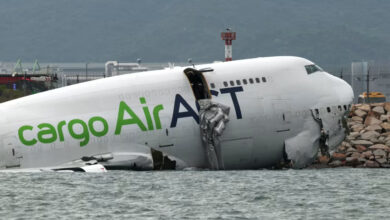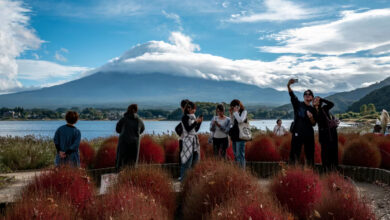
What began as a hiking trip with friends on the breathtaking slopes of on the Tibetan side of Mount Everest turned into a frightening ordeal for 30-year-old Feng Holiday, after a rare October blizzard left her and hundreds of hikers stranded in treacherous conditions.
Feng and her group had set off from Youpa Village, in Tibet’s Shigatze prefecture, for their trek through the scenic Gama Valley on the eastern side of Mount Everest on October 1. But three days in, a freak blizzard struck.
Feng was among hundreds of trekkers who had to evacuate after unusually high snowfall collapsed tents and covered trails on Saturday evening, leaving hikers stranded at roughly 16,400 feet (5,000 metres).
About 350 trekkers had been safely evacuated to the small township of Qudang, while over 200 others had been contacted and were awaiting help from authorities, according to the latest update from Chinese state media CCTV Monday morning.
Support teams were assisting the stranded hikers, Tibetan authorities said Sunday, adding that “supplies are sufficient and personnel are safe.”
Updates on the status of the evacuation from Chinese authorities have been limited. Information is tightly controlled in Tibet, which is an autonomous region of China governed by the Chinese Communist Party.
CNN called the Dingri County Fire Department, the Dingri County Blue Sky Rescue Team and the county government but could not reach anyone.
Digging snow with cooking pots
Feng – an avid hiker – initially wasn’t worried when it started snowing because her group was well equipped. But as the storm grew more intense, with thunder and lightning rattling the mountain range, she became concerned.
“By midnight, the snow was getting heavier, and my sleeping bag wasn’t cutting it. There was condensation dripping inside, making it damp,” she said.
“So, I had to go out and shovel snow, only to find my teammates were buried too. We all had to dig together, which was tough since we had no tools — just used our cooking pots!”
More than 3 feet (95 cm) of snow fell at the summit of Mount Everest Saturday, according to estimates from some snow reports — nearly three times the average weekly snowfall for this time of year.
October is a busy season for hiking around Everest, when skies tend to clear after the monsoon season. This week also coincides with China’s Golden Week holiday.
“The weather this year is not normal. The guide said he had never encountered such weather in October. And it happened all too suddenly,” Chen Geshuang, another trekker who was evacuated to Qudang told Reuters news agency.
“It was so wet and cold in the mountains, and hypothermia was a real risk.”
Videos posted to Chinese social media platform Xiaohongshu showed hikers shoveling snow off buried tents in blustery whiteout conditions.
After a “scary” night, on Sunday morning, Feng and her friends began hiking down the mountain on their own, ditching their tent and gear for lighter packs. They reached the foot of the mountain around 6:30 p.m. local time, where government officials and locals awaited them, Feng said.
The heavy snowfall follows a week of extreme weather across the Himalayan region. Floods and landslides triggered by severe rain in Nepal and around Darjeeling in northeast India killed more than 70 people, Reuters reported.
A South Korean trekker died after hiking the 21,246 feet (6,476 meters) Mera Peak in Nepal Saturday, Reuters reported.
Reflecting on her ordeal on Everest, Feng shared one key lesson: “We have to respect nature.”
CNN’s Joyce Jiang and Briana Waxman contributed reporting.




